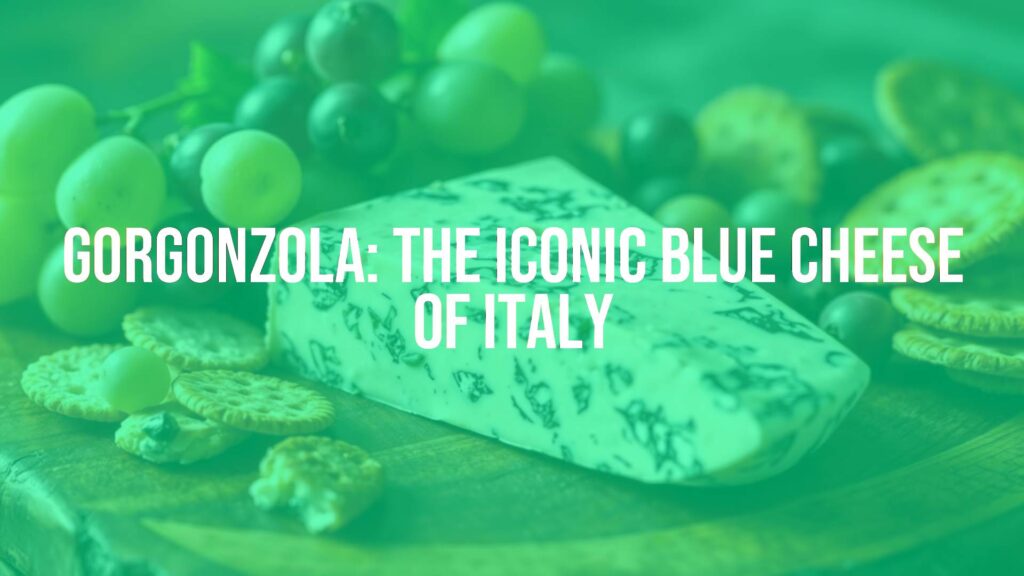Understanding Gorgonzola: An Italian Culinary Treasure
Gorgonzola stands as one of the world’s most celebrated blue cheeses, hailing from the rich culinary traditions of northern Italy. Renowned for its distinct blue veining and complex flavor profile, Gorgonzola is both a symbol of Italian craftsmanship and a beloved ingredient in kitchens and at tables worldwide.
Key Characteristics
This cheese is easily recognizable by its ivory base interlaced with blue-green mold, which develops as part of its natural aging process. Its texture can range from creamy and spreadable (called Gorgonzola Dolce) to a firmer, crumbly consistency with a more intense kick (Gorgonzola Piccante). The flavor spectrum moves from mild, buttery, and slightly sweet notes to bold, tangy, and earthy undertones, depending on the variety and maturation period.
Historical Roots and Regional Significance
Gorgonzola’s story begins in the town of the same name near Milan, with records dating back over a thousand years. The cheese became a staple throughout the regions of Lombardy and Piedmont, where it is still primarily produced today under strict Protected Designation of Origin (DOP) regulations. Local traditions and climate play a crucial role in its unique characteristics, with specific strains of Penicillium mold cultivated to create its signature blue marbling.
How Gorgonzola is Made
The production process starts with full-fat cow’s milk, often heated in copper vats. After the addition of rennet and selected cultures, the curds are cut, drained, and transferred to molds. What truly distinguishes Gorgonzola is the careful piercing of the cheese wheels with needles, allowing air to enter and the blue mold to thrive throughout the paste. Aging times and conditions differ depending on whether it’s destined for the dolce or piccante style, influencing both flavor and texture.
Culinary Roles and Pairings
In Italian gastronomy, Gorgonzola shines both on its own and as a versatile ingredient. Served at room temperature alongside rustic bread, nuts, or pears, it makes a striking addition to an antipasto board. Melting effortlessly, Gorgonzola is a decadent finishing touch for creamy risottos, salad dressings, stuffed pastas, polenta, and sauces for red meats. Its punchy character pairs exceptionally well with sweet accompaniments — think figs, honey, or a drizzle of balsamic reduction.
Beverage collaborations are equally delightful: a glass of aged sweet wine such as Passito di Pantelleria, a robust Italian red, or even a well-crafted porter all complement its intensity.
Varieties of Gorgonzola
The two principal styles are:
- Gorgonzola Dolce: Soft, creamy, and delicately sweet with milder blue veining. Ideal for spreading over crostini or stirring into sauces.
- Gorgonzola Piccante: More mature, drier, and crumbly with a pronounced spicy, piquant flavor. Often sliced or crumbled onto robust salads and steaks.
While traditional recipes prevail, some producers now experiment with aged varieties and special blends to entice cheese aficionados.
Cultural Impact and Traditional Enjoyment
A fixture on Italian tables, Gorgonzola features prominently in both festive banquets and everyday family meals, often symbolizing hospitality and regional pride. Whether savored plain or integrated into classic recipes such as gnocchi al Gorgonzola or paired simply with apples and walnuts, the cheese embodies the Italian spirit of blending simplicity with bold flavor.
Serving Tips
Allow Gorgonzola to reach room temperature before serving to fully appreciate its aroma and taste. For softer varieties, use a spoon or cheese spreader; for the firmer piccante, a sharp knife serves best. Complement with fresh fruit, crusty bread, or use as an unexpected twist to liven up a cheese board.
Gorgonzola’s unmistakable blues continue to inspire chefs and delight palates, ensuring its place as a blue-marbled gem in the world of specialty cheeses.

